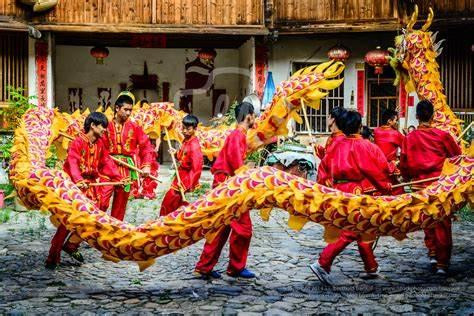Most Australians have seen a Chinese New Year's celebration, with its fireworks, cuisine, and dancing due to the country's sizable Chinese population. The public performances of the lion and dragon dances are distinctive features of the festivities. You'll also see these dances performed at other significant Chinese calendar events. The Dragon and Lion Dances are two different dances, despite what most people believe. Here are some of the differences you need to know:
- Different number of people needed to perform
The main distinction between the two dances is that the Dragon Dance is done by a group of 9–15 dancers for an 18–25 meter–long dragon, whereas two people only perform the Lion Dance. Dragon costumes are controlled using long poles, while lion costumes are operated from within the Lion's head and tail. While both dancers are hidden during a Lion Dance, they are both visible during a Dragon Dance.
A guy dressed as a laughing monk usually follows the lion dance and playfully teases the dancers to delight the crowds. Gongs and percussion frequently accompany the lion dance. People frequently stuff red envelopes with cash into the lion's mouth as a sign of gratitude. The Lion Dance is frequently done during business debuts for good luck because "2" is a lucky number for commerce. The performance of dragon dancers, who don't get paid, involves chasing a ball on a stick held by a performer marching in front of them.
- Various lion dance and dragon dance styles
The significance of the lion and dragon dances has caused the Asian diaspora to adopt the custom. Specifically, the lion dance in China is primarily separated into the northern and southern styles. In contrast to the latter, which emphasizes how similar the dancing lion is to a real lion, the former uses impressive kung fu moves. Sometimes the dancing lion would scratch and move its body, producing a funnier and more energetic dance.
- The lion and the dragon have special meanings
One of the most recognizable Chinese creatures is the dragon, which stands for strength and fortune. So, the more riches the dragon delivers, the longer it dances.
The importance of the lion and the dragon are comparable. Also, they dance to the loudly played-drums and cymbals used to ward off evil spirits. These are the reasons why you'd see the dancing lion and dragon at Chinese New Year celebrations, as well as traditional weddings, festivals, new business launches, and other celebratory occasions.
- The lion and the dragon have special meanings
One of the most recognizable Chinese creatures is the dragon, which stands for strength and fortune. So, the more riches the dragon delivers, the longer it dances. Meanwhile, the importance of the lion and the dragon are comparable. Also, they dance to the loudly played drums, and cymbals used to ward off evil spirits. These are the reasons why you'd see the dancing lion and dragon at Chinese New Year celebrations, as well as traditional weddings, festivals, new business launches, and other celebratory occasions.
Conclusion
There are many differences, yet there are also some parallels. The Lion Dance and the Dragon Dance have a long history, dating back to the Han Dynasty (202BC-220AD). They are performed publicly during festivals and other events to ward off evil spirits, bring good fortune, and amuse spectators. Due to both dances' dexterity and fitness requirements, martial arts, particularly Kung Fu groups, frequently perform them.

